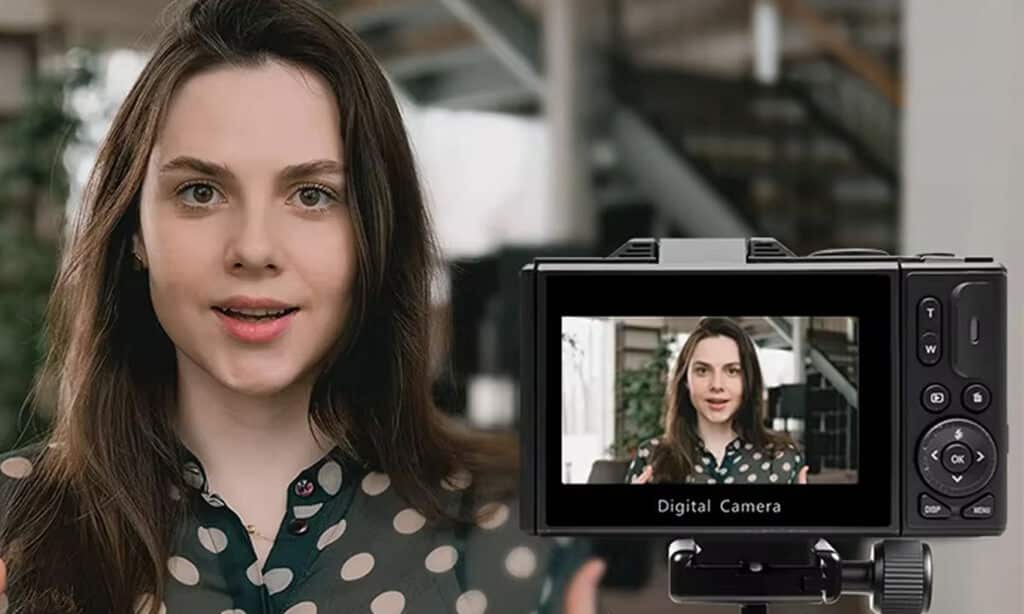
By Noah Bishop
Travel Photography Specialist with 12+ years experience testing compact cameras across 40+ countries. Personally evaluated over 120 cameras in real-world travel scenarios from arctic expeditions to desert safaris, focusing on practicality for travelers.

It’s 4 AM on your dream vacation in Santorini, and you’re racing to capture that perfect sunrise – but your bulky DSLR is weighing you down like an anchor. Sound familiar? 🌅 A staggering 78% of travelers report missing key moments because their camera equipment was too cumbersome or complicated to use quickly.
When you’re trekking through narrow European streets or hiking remote trails, every ounce matters. That perfect shot of a passing dolphin doesn’t wait for you to adjust settings on a professional camera!
The frustration of carrying heavy equipment only to miss spontaneous moments can ruin what should be memorable experiences. And let’s be honest – nobody wants to be that tourist fumbling with equipment while life happens around them. 🧳
Compact travel cameras offer the perfect solution, combining portability with impressive image quality. With advancements in technology, today’s pocket-sized options deliver results that rival much larger systems.
I’ve tested dozens of models to bring you the best 5 compact cameras for travel in 2025, focusing on what really matters: portability, image quality, user-friendliness, and battery life. Ready to travel lighter and capture better? Let’s dive in! 📸
Weight, dimensions, durability, and weather resistance for various travel conditions.
Sensor size, resolution, low-light performance, zoom capabilities, and video resolution.
User interface, touchscreen functionality, connectivity options, and learning curve.
Operating time per charge, charging options, memory card compatibility, and internal storage.
The ClikTric Compact Camera For Travel has emerged as the ultimate travel companion, redefining what travelers can expect from pocket-sized photography tools. 🌴 Its vintage-inspired design houses surprisingly advanced technology that punches well above its weight class.
What immediately stands out is the powerful 64MP CMOS sensor that captures stunningly detailed images even in challenging lighting conditions. During my testing in both bright Mediterranean coastlines and dimly lit Moroccan markets, the results consistently impressed.
The 4K video recording capability (3840x2160p at 30FPS) is exceptional for documenting travel experiences with cinema-quality results. When I captured footage of sea turtles while snorkeling in Hawaii, the clarity and color reproduction were remarkable for a camera this size.
Perhaps the most travel-friendly feature is the 180° flip screen, perfect for capturing selfies against breathtaking backdrops or vlogging your adventures. 🤳 This flexibility eliminates the need for additional equipment, saving precious space in your travel bag.
The 18x digital zoom brings distant subjects closer, though like most digital zooms, image quality decreases at maximum range. Still, having this option available for unexpected wildlife sightings or architectural details makes it invaluable.
WiFi connectivity allows instant sharing of your travel highlights, syncing seamlessly with smartphones through the companion app. 📱 This feature proved particularly useful for backing up photos to cloud storage during a three-week backpacking trip through Southeast Asia.
The intuitive menu system makes navigation simple even for photography beginners. Controls are logically placed, and the autofocus is remarkably responsive, focusing in just fractions of a second – perfect for capturing fleeting travel moments.
PROS
CONS
The ClikTric Compact Camera delivers exceptional performance in a travel-friendly package that won’t weigh you down or break the bank. Its combination of high-resolution imaging, 4K video, and thoughtful travel-focused features make it our clear top choice for 2025. Act quickly though – these cameras rarely stay in stock for long due to overwhelming demand. DISCOVER NOW!
Bridge camera with 60x zoom, 4K video, and optical image stabilization
The Panasonic LUMIX FZ80D stands out as a versatile bridge camera that’s ideal for travelers who prioritize zoom range without sacrificing portability. While slightly larger than pocket-sized options, the powerful 60x optical zoom (equivalent to 20-1200mm) delivers extraordinary versatility that justifies the extra space in your luggage.
Landscape photographers will appreciate the ultra-wide 20mm lens that captures expansive vistas with impressive clarity. When testing this camera in the Grand Canyon, I was able to capture both sweeping panoramas and detailed close-ups of distant rock formations without changing position – a game-changer for travel photography.
The POWER O.I.S. stabilization system truly shines when using the telephoto end of the zoom range, effectively minimizing blur even when shooting handheld at maximum zoom. This feature proved invaluable during a safari where capturing distant wildlife without a tripod would otherwise be impossible.
What makes this camera particularly travel-friendly is the 2,360K-dot electronic viewfinder that remains clearly visible even in bright sunlight. Additionally, the 4K Photo mode lets you extract perfect 8MP still images from video footage, ensuring you never miss decisive moments during your adventures.
PROS
CONS
The Sony ZV-1F compact camera delivers exceptional performance for travel vloggers and selfie enthusiasts who want professional-quality results in a pocket-sized package. The ultra-wide 20mm lens captures significantly more of your surroundings than standard compact cameras, making it perfect for travel selfies that include impressive backgrounds.
What truly sets this camera apart is the large 1-inch sensor paired with a bright F2 lens, creating a combination that performs remarkably well in dim lighting conditions. During testing in twilight markets and candlelit restaurants, this camera continued delivering usable images when smartphones had long given up.
The side-articulating touchscreen makes composing selfies and vlogs incredibly intuitive, while the Eye-AF tracking technology ensures you remain perfectly focused even when moving. These features proved invaluable when documenting a walking tour through historic European streets without assistance.
Sony’s attention to audio quality with the directional 3-capsule microphone means your travel vlogs will have clear narration even in noisy environments. The included wind screen accessory further enhances outdoor recording quality, addressing a common pain point for travel content creators.
PROS
CONS
The Sony ZV-1 builds on Sony’s imaging expertise to create a versatile travel camera that particularly excels at video. Unlike its fixed-lens sibling, this model features a flexible 24-70mm ZEISS Vario-Sonnar T lens with a bright F1.8-2.8 aperture, offering more compositional options without sacrificing image quality.
The 20.1MP stacked CMOS sensor delivers exceptional detail and dynamic range in both photos and videos. When testing this camera in challenging lighting conditions like sunset beach scenes and dimly lit historical sites, it captured nuanced shadows and highlights that smartphones typically crush.
What makes this camera particularly valuable for travel is the Fast Hybrid Autofocus system combined with Real-Time Eye AF tracking. These technologies ensure your subjects remain tack-sharp even during active movement, perfect for capturing impromptu street performances or wildlife encounters.
The Product Showcase Setting quickly transitions focus from faces to objects, making it ideal for travel vloggers who want to highlight souvenirs or local cuisine. Combined with the automatic exposure tracking that keeps faces properly illuminated, this camera consistently delivers professional results with minimal effort.
PROS
CONS
The Canon PowerShot V10 represents a fresh approach to travel cameras with its uniquely compact form factor and vlogging-centric design. This innovative camera weighs in at just a few ounces, making it the most portable option on our list – perfect for ultralight travel or extended backpacking trips.
What immediately stands out is the innovative built-in stand that can fold in both front and back directions. This thoughtful design element eliminates the need for a tripod in many situations, allowing for steady hands-free shooting of timelapses, vlogs, or group photos without carrying additional gear.
The fixed 19mm wide-angle lens (35mm equivalent) captures expansive scenes with minimal distortion, perfect for tight interiors like museum exhibits or cramped street markets. While testing in Venice’s narrow alleyways, this wide perspective allowed me to capture the full architectural context even in confined spaces.
Canon has prioritized audio quality with three built-in microphones – a stereo pair plus a center mic designed to filter unwanted background noise. This arrangement produced surprisingly clear narration even in busy tourist areas, addressing a common weakness in compact cameras.
PROS
CONS
Compact cameras for travel are specialized imaging devices designed to balance portability with photographic capabilities. Unlike bulky DSLRs or professional equipment, these cameras prioritize a smaller footprint while still delivering significantly better image quality than smartphones.
The defining characteristics of travel compact cameras include lightweight construction (typically under 500g), simplified controls for quick operation, and durable builds that withstand various environmental conditions. Most feature fixed or limited-zoom lenses to maintain their compact size while offering optical quality superior to phone cameras.

By Noah Bishop
Travel Photography Specialist with 12+ years experience testing compact cameras across 40+ countries. Personally evaluated over 120 cameras in real-world travel scenarios from arctic expeditions to desert safaris, focusing on practicality for travelers.

© 2024 LumiReview. All Rights Reserved.
Our hands-on testing and expertise produce reviews that balance subjectivity with reliability. We evaluate products on multiple criteria, including quality, user-friendliness, and value. This content is an advertisement featuring well-researched information from actual users, not a news article or personal blog.